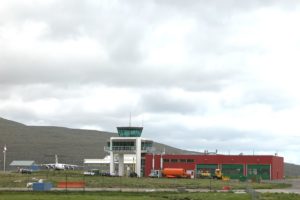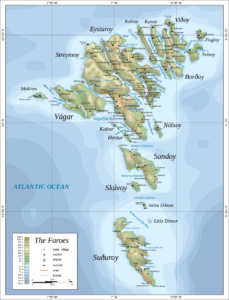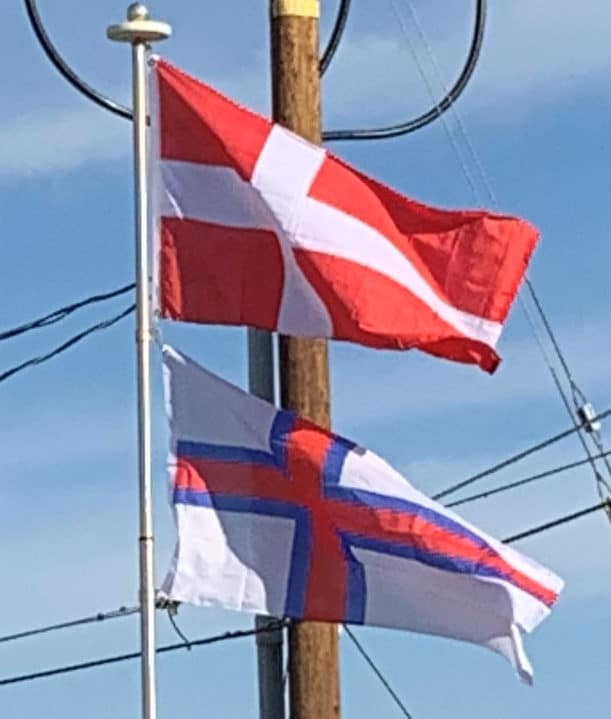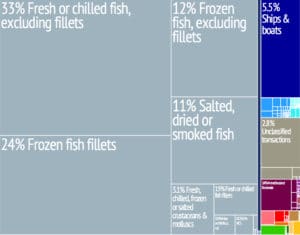Petroleum found close to the Faroese area gives hope for deposits in the immediate area, which may provide a basis for sustained economic prosperity.
13% of the Faroe Islands’ national income comes as economic aid from Denmark. This corresponds to roughly 5% of GDP.
Since 2000, the government has fostered new information technology and business projects to attract new investment. The introduction of Burger King in Tórshavn was widely publicized as a sign of the globalization of Faroese culture. It remains to be seen whether these projects will succeed in broadening the islands’ economic base. The islands have one of the lowest unemployment rates in Europe, but this should not necessarily be taken as a sign of a recovering economy, as many young students move to Denmark and other countries after leaving high school. This leaves a largely middle-aged and elderly population that may lack the skills and knowledge to fill newly developed positions on the Faroes. Nonetheless, in 2008 the Faroes were able to make a $52 million loan to Iceland to help with that country’s banking woes.
On 5 August 2009, two opposition parties introduced a bill in the Løgting to adopt the euro as the national currency, pending a referendum.
Transport:
The road network on the Faroe Islands is highly developed. By road, the main islands are connected by bridges and tunnels. Government owned Strandfaraskip Landsins provides public bus and ferry service to the main towns and villages. There are no railways.
By air, Scandinavian Airlines and the government owned Atlantic Airways both have scheduled international flights to Vágar Airport, the islands’ only airport. Atlantic Airways also provides helicopter service to each of the islands. All civil aviation matters are controlled from the Civil Aviation Administration Denmark.

By sea, Smyril Line operates a regular international passenger, car and freight service linking the Faroe Islands with Seyðisfjörður, Iceland and Hirtshals, Denmark.
Because of the rugged terrain, road transport in the Faroe Islands was not as extensive as in other parts of the world. This has now changed, and the infrastructure has been developed extensively. Some 80 percent of the population of the islands is connected by tunnels through the mountains and between the islands, bridges and causeways that link together the three largest islands and three other islands to the northeast. While the other two large islands to the south, Sandoy and Suðuroy, are connected to the main area with ferries, the small islands Koltur and Stóra Dímun have no ferry connection, only a helicopter service. Other small islands—Mykines to the west, Kalsoy, Svínoy and Fugloy to the north, Hestur west of Streymoy, and Nólsoy east of Tórshavn—have smaller ferries and some of these islands also have a helicopter service.

In February 2014 all the political parties of the Løgting agreed on making two subsea tunnels, one between Streymoy and Eysturoy (the Eysturoyartunnilin) and one between Streymoy and Sandoy (Sandoyartunnilin). The plan is that both tunnels should open in 2021 and they will not be private. The work to dig the Eysturoy-tunnel started on 1 March 2016 above the village of Hvítanes near Tórshavn.
Flag of the Faroe Islands:
The flag of the Faroe Islands is an offset cross, representing Christianity. It is similar in design to other Nordic flags – a tradition set by the Dannebrog of Denmark, of which the Faroe Islands are an autonomous territory.

